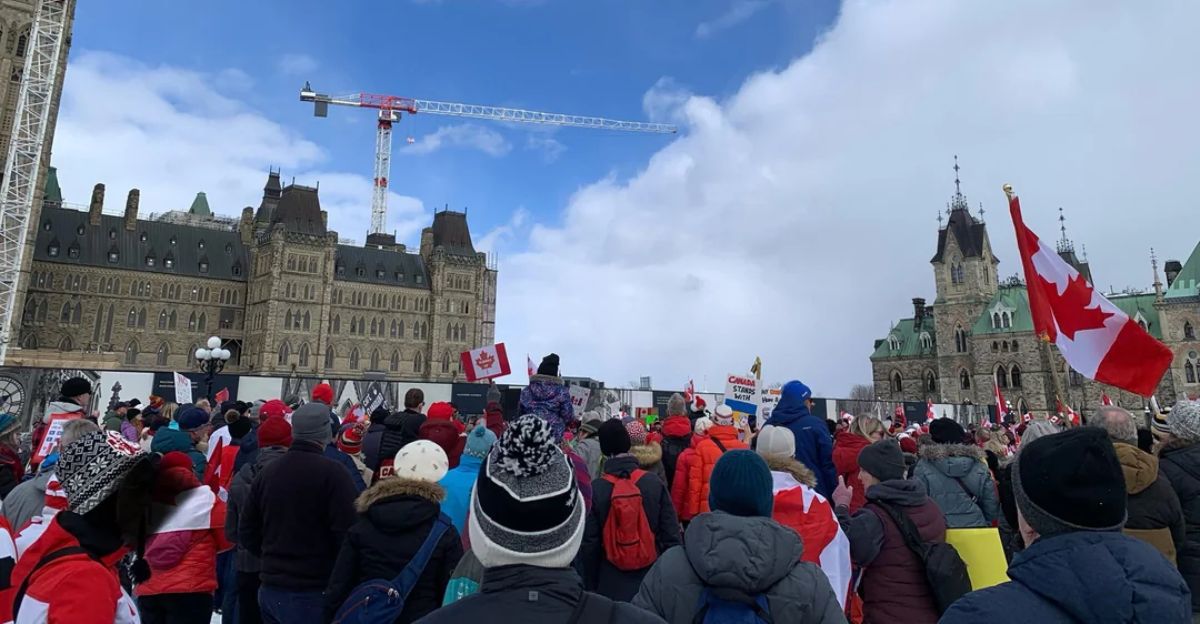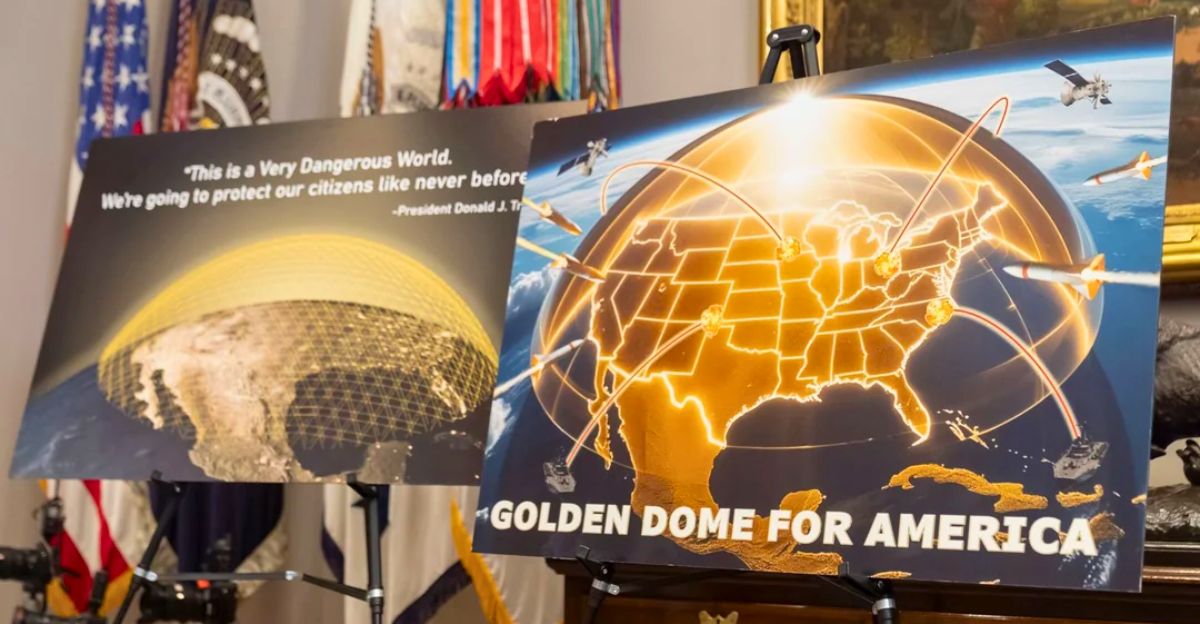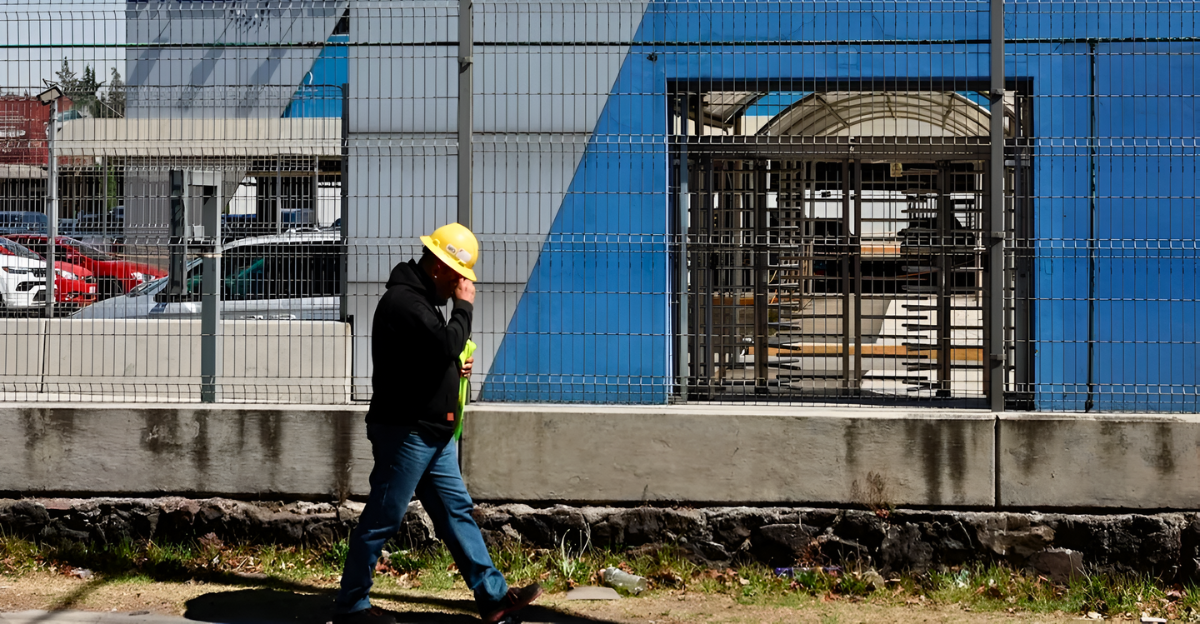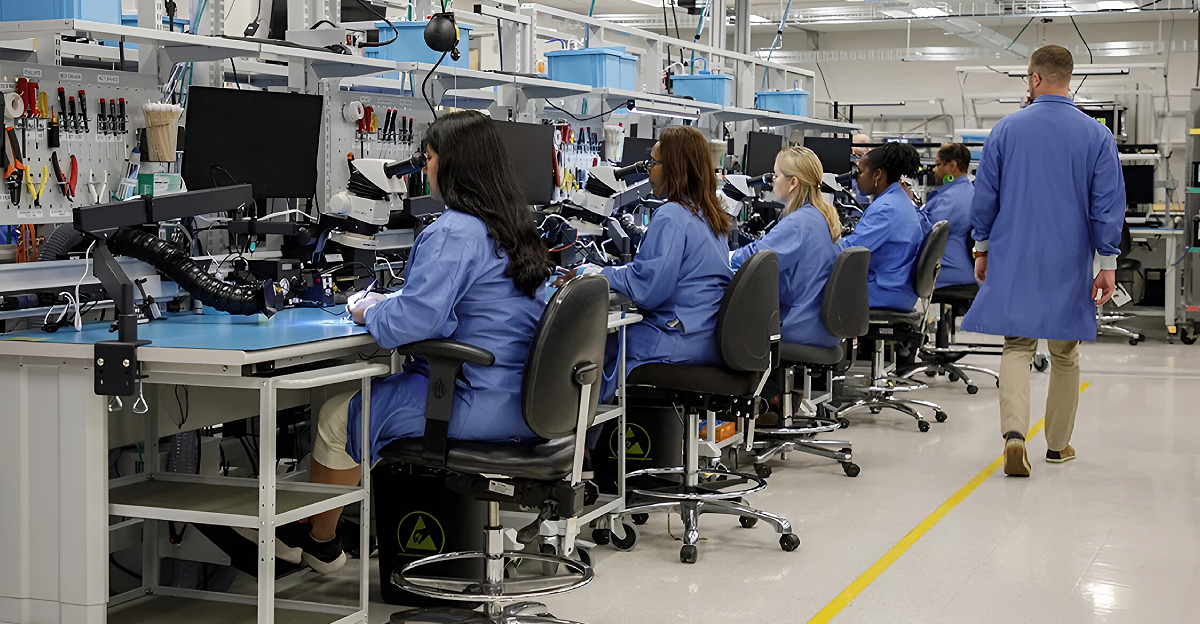
President Trump unveiled the “Golden Dome” missile-defense blueprint on May 20, 2025, aiming to deploy a next-generation shield across the entire continent. He named Space Force Gen. Michael Guetlein to lead the effort and secured a $25 billion down payment in Congress. Trump claimed the system would integrate land, sea, and space sensors and “should be fully operational before the end of my term,” adding that “we’ll have it done in about three years”.
Supporters hailed it as an “Iron Dome on steroids,” invoking Israel’s defense system, but critics quickly warned the tab could swell far past Trump’s $175 billion estimate.
Sovereignty Echoes

The next day, King Charles III rode in to open Canada’s Parliament, reminding lawmakers that “The True North is indeed strong and free”. His speech – the first by a British monarch in Ottawa since 1977 – was widely seen as a nod to Canada’s autonomy amid talk of U.S. annexation. Indeed, polls that same day showed a jump in Canadian national pride: 66% of respondents said the monarchy helped distinguish Canada from the U.S. (up from 54% two years prior).
Some Canadians openly relished the attention: Toronto realtor Abdel Rafeeq told a reporter, “with the tariffs and the trade war, if the British monarchy plays a more active role in standing up for Canada, then I welcome the British monarchy”.
Defense Legacy

Long before Golden Dome, the U.S. and Canada have cooperated on missile defense. Since 1957, NORAD has tied together radar stations on both sides of the border into a joint early-warning network. In contrast, Reagan’s 1980s “Star Wars” anti-missile dreams never materialized, and even Israel’s Iron Dome – Golden Dome’s namesake – only protects a tiny area (less than 1% of U.S. territory).
Nonetheless, Trump issued an executive order in January 2025 directing the Pentagon to “design an Iron Dome for America” and report back within 60 days. At present, many Golden Dome technologies are still at prototype stage – from space-based sensors and AI command systems to boost-phase interceptors.
Technical Hurdles

Skeptics were quick to line up. The Congressional Budget Office reports that space-based components alone could cost as much as $542 billion over 20 years. Analysts warn of daunting technical challenges and strategic pitfalls. A Chatham House study notes that a U.S. shield seen as neutralizing any retaliatory strike would risk sparking “a dangerous global arms race”.
China’s foreign ministry joined the chorus, saying the plan carries “strong offensive implications” and could undermine global stability. (Russia’s arms-control chief Sergei Ryabkov has likewise called such programs “deeply destabilising” and warned they add “hard-to-overcome obstacles” to deterrence.)
Conditional Freebie

The stakes jumped even higher on May 27 when Trump took to social media with an offer–or ultimatum. On Truth Social he posted that Canada could join Golden Dome “for ZERO DOLLARS” if it becomes our cherished 51st State; otherwise, “it will cost $61 Billion Dollars if they remain a separate, but unequal, Nation”. In one swoop, the president tied a missile-defense deal to Canadian statehood. Trump’s exact words were stark: “I told Canada… it will cost $61 Billion Dollars… but will cost ZERO DOLLARS if they become our cherished 51st State. They are considering the offer!”.
Global News confirmed his $61 billion price tag and noted the timing just after King Charles’s speech, while Reuters observed that such a quid pro quo has no precedent. Canada’s reaction was swift.
Ottawa Pushback

Canada’s leaders wasted no time rejecting the offer. In the Oval Office on May 6, Carney firmly told Trump that Canada was never “for sale” – “It won’t be for sale, ever” – leaving no doubt he would never consider statehood. Trump’s sarcastic “Never say never” aside, Carney later clarified that he had explicitly asked the president to drop any annexation talk before even beginning defense talksr.
Back in Ottawa, the entire political spectrum echoed that stance. Opposition parties and provincial premiers agreed that any contribution to a joint missile shield should be judged on security needs, not by swapping Canadian sovereignty.
Elbows Up

Anger on both sides of the border soon spilled into the streets. On March 9, at least 1,000 Canadians gathered on Parliament Hill in Ottawa. They waved maple-leaf flags and wore “Elbows Up” T‑shirts – a hockey metaphor for preparing to take a hit. Rally organizer Peter Wall told Reuters the annexation rhetoric felt like “our longstanding friend and ally has turned against us and we don’t know what to do”, a feeling echoed by many.
In solidarity, some provinces pulled U.S. liquor off store shelves and social media campaigns urged Canadians to boycott travel to the U.S. Polls indicate this backlash may have helped Carney’s Liberal Party claw back from a 20-point deficit to win April’s election.
Capitol Scrutiny

Across the border, Washington lawmakers began demanding details. Congress approved the $25 billion “down-payment” in the budget, but many legislators complained that the plan so far involves too many unproven gadgets – “space lasers” and the like – that effectively don’t exist yet. Defense analysts note that contractors from Lockheed Martin to SpaceX are already lining up, lobbying for a piece of the Golden Dome pie.
The Pentagon has kept the final architecture under wraps, but leaked details suggest a multi-layered design: constellations of satellites for early warning, ground and ship-based interceptors, and even directed-energy beam prototypes. During a briefing, Sen.
Arms Race

Strategists warn that Golden Dome could shake up the nuclear balance. The Arms Control Center estimates that just deploying space-based interceptors might cost on the order of $500 billion over 20 years – dwarfing Trump’s $175 billion figure. Russia has already described the initiative as “deeply destabilising,” and its deputy foreign minister Sergei Ryabkov told TASS that programs like Golden Dome create “hard-to-overcome obstacles” to arms control.
Beijing similarly vowed to take “counter-measures of our choosing” if its security is threatened. As one Chinese spokesperson put it, the U.S. pursuit of Golden Dome violates the principle that the security of every country should not be undermined, carrying “strong offensive implications”.
Uncertain Path

For now, both governments are pausing for the next moves. A North American leaders’ summit is scheduled for August in Denver – Trump, Carney, and Mexico’s president will all attend. Canadian diplomats hint that Ottawa might fund upgrades to shared radar and sensor networks (benefiting NORAD) without demanding any statehood strings, provided Washington agrees on spending limits.
Aerospace engineers have noted that partial coverage of threats by around 2028 is conceivable – but only if Congress maintains bipartisan support and allies chip in.






